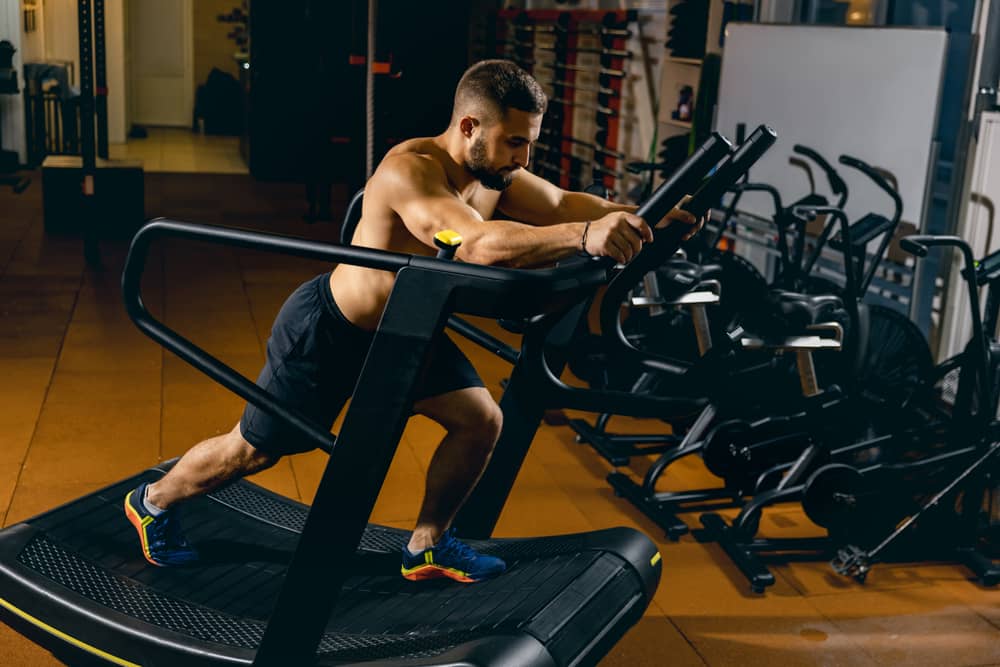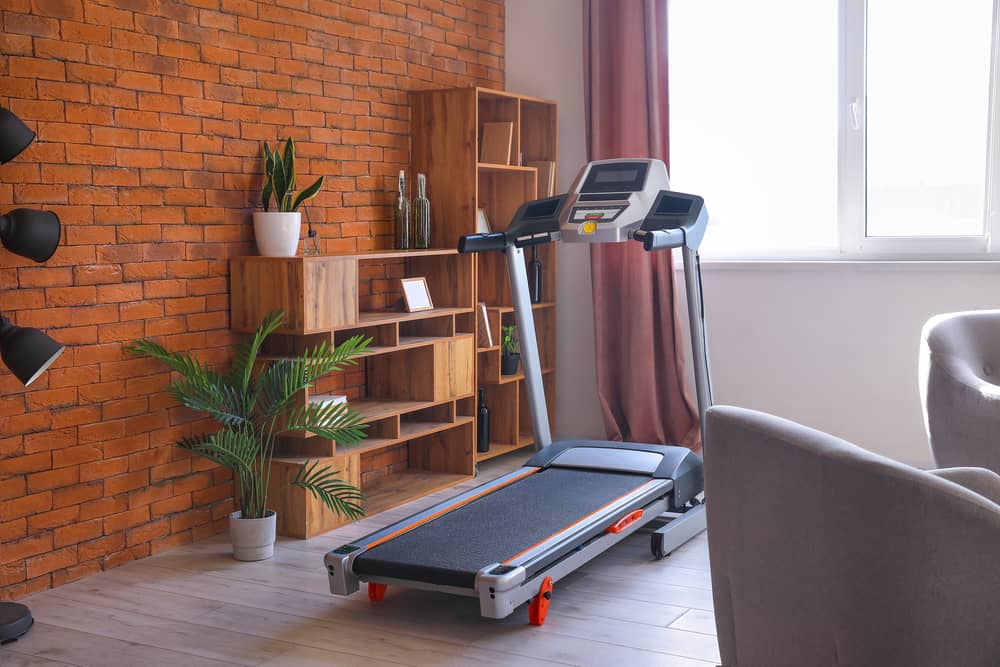Are you looking for the best treadmill but cannot decide which one to get? Choosing the best machine should be easier once you know the differences between manual and motorised treadmills.
We know that one type needs electricity while the other works without it.
However, they have other distinct features that could affect your workouts and overall experience.
A manual treadmill gives you complete control of your running sessions and infinite room for progress. On the other hand, a motorised treadmill has adjustable and interactive features to ensure effective yet enjoyable workouts.
This comparison article will highlight the treadmills’ vital factors, pros, and cons.
That way, you can tell which model fits your goals and preferences best.
Manual vs Motorised Treadmills
Before identifying their specific points of difference, let’s define manual and motorised treadmills first.
A manual treadmill is a machine without a motor. Its belt moves based on the users’ effort or activity input. That means you can exercise entirely at your own pace.
There are two general types of manual treadmills: the flat and the curved.
The flat manual treadmill is more affordable and best for walking or jogging sessions.
Curved manual treadmills have a unique concave shape that minimises joint impact while running.
These machines suit athletes more and those into intense workouts like HIIT.
A motorised treadmill is a machine that needs a power source to work.
Its belt moves according to your selected speed settings, which usually range between 16 and 22 km/h.
Some walking pads have lower speed ranges than this, but the bottom line is motorised treadmills have speed limits.
Your pace depends on the built-in settings of the machine.
Despite this, motorised treadmills typically have hi-tech features to make monotonous running sessions more engaging.
They are also highly available in the market, giving you better choices that suit your budget.

8 Key Differences Between Manual and Motorised Treadmills
Let’s compare these treadmill types further by identifying various aspects that make them unique.
Consider these distinct features when choosing between the two.
1. Adjustable Speed
Both manual and motorised treadmills have highly adjustable speeds but at different degrees.
Manual treadmills have infinite speed limits. You can quickly change your speed level by running slower or faster without worrying about buttons or dials.
This aspect makes these machines highly adaptable to their users, no matter their running skill or fitness level.
Motorised treadmills have digitally adjustable speed levels, meaning you can change them through the built-in console or computer.
This aspect is ideal for runners looking for consistency and predictability.
The problem is electric treadmills can only run up to a specific maximum speed limit, depending on the model.
This limitation can be less appealing to more advanced runners.
2. Adjustable Incline
With the incline function, manual and motorised treadmills share several differences. For instance, manual treadmills often lack this feature.
Some flat manual machines have a fixed incline, while others only have one or two adjustable incline levels.
Currently, incline mode is not available in curved manual treadmills, either.
It will probably be challenging to incorporate this feature in this machine type, given its concave deck.
Motorised treadmills reign supreme if you’re keen on indoor uphill running.
Plenty of electric treadmills have an incline mode that you can quickly adjust.
Some high-end models even have an automated incline feature or a maximum incline level as steep as 40%!
A few others also have a decline mode for downhill running.
Check out our previous post to learn how adjustable incline and speed levels can enhance your treadmill workouts.
3. Technology and Interactivity
Manual and motorised treadmills share more defined differences in their technological features.
Since manual treadmills do not require electricity, these machines lack modern perks like Bluetooth or Wi-Fi connectivity, app compatibility, and computer-based heart rate monitoring.
Motorless treadmills also have limited entertainment options. They do not have built-in speakers or LCDs for watching workout videos.
On the other hand, motorised treadmills, particularly premium models, sport the latest technology. Most have a console with a vast display.
They are usually Bluetooth and Wi-Fi-ready, so syncing your smartphone, tablet, or wireless headphones with your electric machine should be easy.
Overall, motorised treadmills are more feature-packed than their manual counterparts.
Then again, some runners can do without technological or interactive features.
Plus, the more advanced the treadmill, the more expensive it is.

4. Calorie Burn and Workout Efficiency
Calorie burn is another notable difference between manual and motorised treadmills.
Because the motor of an electric treadmill does some of the work for you, energy expenditure is not as optimised.
You should adjust your speed or stretch your workout duration to burn plenty of calories.
On the other hand, as your legs will work harder to move the manual belt, you’ll activate more muscles and burn more calories.
Snyder and colleagues (2011) confirmed this workout effect.
Specifically, they observed a higher heart rate and oxygen uptake among their manual curved treadmill participants.
5. Impact on Joints
We know that outdoor running is a high-impact exercise.
Your legs and knees can hurt as your feet constantly hit the hard pavement.
Using a treadmill is more joint-friendly. Treadmills generally have specialised construction and designs that absorb shock, protecting your knees and feet.
However, manual and motorised treadmills have shock-absorbing feature differences.
For instance, a manual flat-belt model has a running surface that is not much different from regular pavement.
Using it for your cardio sessions is even more strenuous on the joints since you’ll be moving the belt manually.
The curved manual treadmill is a better choice. Its arched deck encourages a more natural stride, lessening the impact.
This manual operation and joint-friendly deck combination are good features, especially if you like intense or long workouts.
On the other hand, the impact is considerably less with a motorised machine as the motor moves the running belt, not your legs.
Also, electric treadmills typically have cushioned decks.
The running surface bounces as your foot hits the deck to soften your landing.
6. Safety and Control
You probably saw funny videos of gym-goers accidentally sliding off the back of a moving belt.
It’s no laughing matter, though. It is a genuine safety hazard that can happen to you if you’re not careful.
However, this will not be a problem with a motorless treadmill. Without your physical input, its belt will not move unexpectedly.
Also, you have complete control of how fast you’ll go while working out.
The instant you stop running, the manual treadmill belt also immediately slows down and stops.
So, if you have balance issues or want absolute control of your workouts, a manual treadmill is 100% worth considering.

7. Size and Weight
There are significant dimension and machine weight differences between manual and motorised treadmills.
Generally, motorised treadmills are heavier and bulkier mainly because of their motor component.
The built-in electronics of these machines also add to their size and weight.
On the other hand, manual or self-propelled treadmills lack an electric motor.
Typically, they do not have a console or large HD screen, either.
The deck length of most manual models appears shorter, too.
So, if you have limited space at home, a flat or curved-belt treadmill may be good for you.
However, most motorised treadmills are also foldable. Some can be stored upright or folded in half.
Whichever you choose, measure your workout area first to ensure you have ample space for your treadmill.
8. Price
Manual and motorised treadmills have significant upfront cost differences, so it’s crucial to research first before buying.
Generally, flat-belt treadmills are the most budget-friendly. They are ideal for occasional runners who are not very particular with modern treadmill features.
Motorised treadmills are a popular choice because of their wide price range.
While more expensive than flat manual machines, you can get a quality mid-range electric treadmill at a reasonable price.
Our article on treadmill price categories has more details on this.
Still, if budget is not an issue, consider getting a curved manual treadmill.
This machine is relatively new and typically made from heavy-duty materials, which explains its high price.
Like any exercise machine, more expensive treadmills can do more for you. However, you have to go beyond price tags when assessing your options.
Summary of Manual and Motorised Treadmill Differences
Here’s a table highlighting the pros and cons of both treadmill types.
| FEATURE | MANUAL | MOTORISED |
| Power supply | Does not need to be plugged in | Requires an electrical outlet and batteries |
| Adjustable speed | Infinite; depends on your running effort or ability | Limited; fixed speed range varies from model to model |
| Adjustable incline | Limited or no incline mode at all | Usually have incline options; some have a decline mode as well |
| Technology and interactivity | Limited to small consoles and basic workout metrics; lacks connectivity features | Highly interactive; can be synced with other devices or apps |
| Calorie burn and workout efficiency | High due to increased muscle engagement | Not as optimised as the motor does some of the work for you |
| Impact on joints | Curved belts lessen the impact | Cushioned decks soften the landing |
| Safety and control | High as the belt won’t move without physical input | Moderate; machine control requires some getting used to |
| Size and weight | More compact and lightweight; ideal for small spaces | Bulky and heavy; some are foldable to save space |
| Price | Curved treadmills can be pricey | Available in a wider price range |
Final Thoughts
Despite being under the same cardio machine category, it’s clear that these treadmill types are poles apart.
I assume the training experience will be similar to driving a manual and automatic car.
Both require getting used to, and the ultimate choice depends on your preference.
If you like intense running and prefer absolute workout control, a manual treadmill suits you.
This type of treadmill is also more space-efficient and ideal for runners not keen on advanced features.
On the other hand, if you think running workouts are better with music, trainer-led videos, incline settings, or extensive fitness app libraries, motorised treadmills are your match.
These machines are heavy and bulky, though. Still, electric treadmills are more common, giving you more options that fit your fitness goals and budget.
If you plan to shop for a treadmill in-store, why not give both types a test drive?
See which one feels more comfortable and uncomplicated to use.

FAQs About Manual and Motorised Treadmills
1. How do curved treadmills differ from traditional flat treadmills?
These treadmill types have different running surfaces: one is curved and grooved, while the other is flat and smooth. Curved treadmills are ideal for runners who want to improve their running form, endurance, and stability. On the other hand, traditional flat treadmills are perfect for speed training and detailed performance tracking.
2. Are manual treadmills more advanced?
Manual treadmills are advanced, in a way, since they address some of the common issues encountered in electric flat machines. Even without electricity and hi-tech features, manual treadmills can push users to exercise harder and burn more calories. The innovative design of curved-belt manual treadmills also made intense workouts more joint-friendly.
- What Are the Advantages and Disadvantages of Folding Treadmills? - 11 March 2025
- Can You Use a Massage Gun When Pregnant? - 10 March 2025
- What is the Best Pre-Run Food? - 6 March 2025
